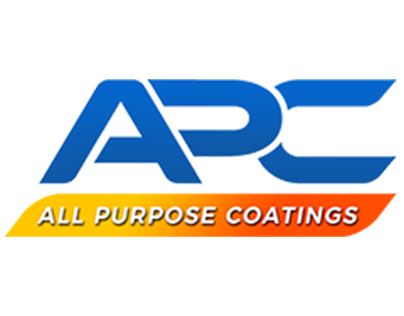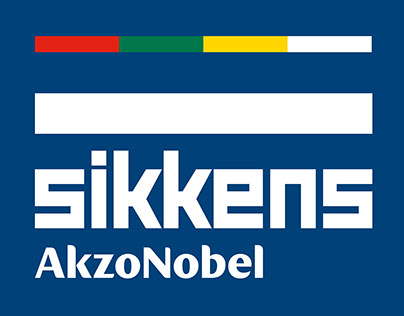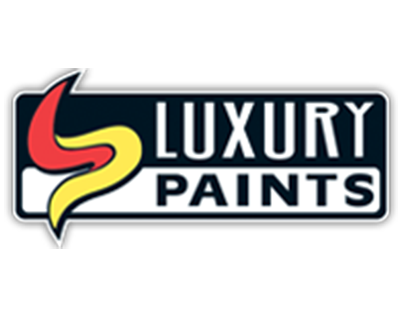FAQ
The Following Is A List Of The Most Frequently Asked Questions We Receive At Palmerston Paint Supplies.
If you can't find the answer to what you are searching for here, don't hesitate to contact our friendly team today!
- My bathroom has been previously coated in enamel and I now want to use a water based finish. What do I need to do?
- How much paint do I need to paint a small bedroom?
- Must I always use two topcoats of interior wall paint?
- I want to paint a hallway in a very dark, bright colour and still have good washability and scrub resistance. Is a low sheen acrylic good enough for this use?
- I have chosen a bright colour to paint my interior walls with. Why do I need to use a tinted undercoat?
- Why shouldn't an 'exterior only' grade paint be used inside?
- The exterior of my house has been painted many years ago with an enamel. I now want to use a water based on top. Is that OK?
- I have a metal balustrading on my house that has rust spots coming through and some flaking paint. How do I fix it?
- Can brand new Colorbond be painted with a 'no primer' exterior acrylic?
- Is an oil based or water based paint better for outside?
- I live along a harsh seashore environment, where there is high humidity, wind-driven rain, and salt. Which is the best product to use, an acrylic or oil based paint?
- What is the procedure of Acid Etching concrete
- My floors have been previously coated in a polyurethane, can I put a two-pack polyurethane on top?
- How can I stain my timber floorboards?
- What clear coating can I put on my timber bench tops?
- What clear can I use on my exterior decking?
- How can I tell if my existing paint is water based or oil?
- Which roller cover do I use for which paint?
- Can I still paint on a cold day?
- Do I always need an acrylic sealer undercoat on bare plasterboard?
- Does acrylic paint go off?
- I bought a satin polyurethane but it is drying very shiny as if it is a gloss finish.
- I need a clear coating that will not yellow, which one can I use?
- What are the advantages of using a sealer before coating my floors with a solvent based coating?
- I'm using a polyurethane and the first coat was fine. When I applied the second coat the first coat wrinkled and bubbled. Why?
- I want to paint a masonry wall. Do I use a primer or sealer?
- Can I use one brand of undercoat followed by another brand's topcoat for my painting job?
- When do I need to apply a primer?
- When I purchase paint in a particular colour, can I be guaranteed it will match the colour card?
- Why are ultra premium products better than the other ranges?
- How can I remove mould from walls and ceiling?
- My floors have been previously coated in a polyurethane, can I put a two-pack polyurethane on top?
- How can I remove mould from walls and ceiling?
- My floors have been previously coated in a polyurethane, can I put two-pack polyurethane on top?
1. MY BATHROOM HAS BEEN PREVIOUSLY COATED IN AN ENAMEL AND I NOW WANT TO USE A WATER BASED FINISH. WHAT DO I NEED TO DO?
The walls need to be thoroughly washed with a mix of water and sugar soap, rinsed and sanded so that no gloss remains. One coat of acrylic sealer undercoat is necessary for adhesion before two topcoats of preferably a satin acrylic is applied.
2. IF I PAINT A LARGE WALL INSIDE, WILL THE COLOUR LOOK LIGHTER OR DARKER THAN THE COLOUR CHIP?
Lighting plays a huge part in the appearance of a colour, but generally the colour will look darker when seen on a large, interior area.
3. HOW MUCH PAINT DO I NEED TO PAINT A SMALL BEDROOM?
As a rough guide, most acrylic interior wall paints will cover about 13-16m2 per litre, but always check the manufacturers label. Remember to calculate enough paint for two coats.
4. MUST I ALWAYS USE TWO TOPCOATS OF INTERIOR WALL PAINT?
To ensure the proper durability and washability of paint, two coats must always be used to obtain a thick enough film build. Two coats are also important for even colour coverage.
5. I WANT TO PAINT A HALLWAY IN A VERY DARK, BRIGHT COLOUR AND STILL HAVE GOOD WASHABILITY AND SCRUB RESISTANCE. IS A LOW SHEEN ACRYLIC GOOD ENOUGH FOR THIS USE?
Generally speaking, the lower the gloss and the darker the colour, the more noticeable marks, such as scuff marks, will be. For high traffic areas the choice of a satin acrylic or oil based finish may be the better option. Where scuff and scrub resistance is a high priority, (irrespective of colour) enamel paints are the preferred option. Resistance properties generally improve with increasing gloss level.
6. I HAVE CHOSEN A BRIGHT COLOUR TO PAINT MY INTERIOR WALLS WITH. WHY DO I NEED TO USE A TINTED UNDERCOAT?
Because strong colours are tinted from a Clear or an Accent Base, the opacity of the finish comes mainly from the tinters. Some tinters, especially the yellows and reds, do not have the opacity to provide good coverage, regardless of the brand of the product or the tinter. A grey undercoat underneath helps these colours to have an even finish and to provide a solid colour.
7. WHY SHOULDN'T AN 'EXTERIOR ONLY' GRADE PAINT BE USED INSIDE?
In terms of film properties, there is no reason why exterior paints can't be used inside. There may be other reasons (eg sheen level) why they may not be considered suitable. Drying times may also have to be extended.
8. THE EXTERIOR OF MY HOUSE HAS BEEN PAINTED MANY YEARS AGO WITH AN ENAMEL. I NOW WANT TO USE A WATER BASED ON TOP. IS THAT OK?
The most important first step of preparation in this situation is to ensure that the existing paint is stable by doing a cross adhesion test. This is done by using a sharp blade to cut a deep, close together 'naughts and crosses' pattern in the existing paintwork. Press a piece of masking tape over the cut area and press down firmly. If any paint comes off when the masking tape is ripped off quickly, the old paint is not stable and therefore must be completely removed. If the paint does not come off at all with the masking tape, and as long as the surface is washed with warm soapy water, (to remove any contaminates) and sanded thoroughly (to remove any gloss), an exterior grade acrylic designed to be applied to a surface without an undercoat, can be applied. Two coats of this acrylic is always necessary for protection.
9. I HAVE A METAL BALUSTRADING ON MY HOUSE THAT HAS RUST SPOTS COMING THROUGH AND SOME FLAKING PAINT. HOW DO I FIX IT?
Remove all lose or flaking paint with a wire brush and sandpaper. Sand any remaining existing paint. With a rust converter, coat rusted areas and allow to dry (as recommended on can). Follow by spot priming areas treated with the rust converter with a metal primer and finish off with two coats of either an enamel or an epoxy coating. STEPS: 1. Remove flaking paint 2. Sand remaining paint 3. Use a rust converter on rust (optional depending on severity of rust) 4. Metal primer 5. Top coat
10. IS AN OIL BASED OR WATER BASED PAINT BETTER FOR OUTSIDE?
It depends on what is being painted. For the majority of surfaces, an acrylic is going to last longer. Acrylics are softer, more flexible, and more resistant to chalking. This is because the acrylics have a much higher elasticity rate, so that when the surface, such as timber, expands and contracts with the weather, the paint moves without cracking. Luxury Water Based Acrylic is suitable for areas such as sash windows or any other situation where two surfaces are touching. This is because the general exterior acrylics, being softer, have the tendency to stick to themselves in hot weather, so using this Luxury product will avoid sticking. Oil based primers etc. are necessary for any ferrous metal, such as steel.
11. CAN BRAND NEW COLORBOND BE PAINTED WITH A 'NO PRIMER' EXTERIOR ACRYLIC?
It is almost impossible to get paint to stick to new Colorbond as it was designed to be a product that never needs painting. It is usually recommended that the Colorbond be weathered for several years so the surface has a chance to chalk before even attempting to coat it. It is then advisable to use an etch primer before applying two coats of either acrylic or enamel. If however it is deemed necessary (eg because colour change is required), then the most effective treatment is probably as follows. Wash with solvent (Min Turps or White Spirit) to remove surface grease/oil etc. Abrade surface with fine grit to roughen surface. Apply Acrylic undercoat and allow to dry through (it may take as long as a fortnight before adhesion is developed), prior to top coating with either acrylic or enamel. This is no guarantee given with this procedure, and it may be regarded as impractical in some circumstances, however it is offered as advice only in answer to the question.
12. WHICH CLIMATIC CONDITIONS ARE IDEAL FOR EXTERIOR PAINTING?
Between 10-35 degree celsius and not when there is very high humidity (above 85%) or windy conditions. Avoid painting directly in the hot sun, since the surface can often be up to 10 degree celsius hotter. When painting outside in hot weather (i.e. porous surfaces using water based paint) dampening the surface slightly with clean water will help with the application.
13. I LIVE ALONG A HARSH SEASHORE ENVIRONMENT, WHERE THERE IS HIGH HUMIDITY, WIND-DRIVEN RAIN, AND SALT. WHICH IS THE BEST PRODUCT TO USE, AN ACRYLIC OR OIL BASED PAINT?
Acrylic paints have demonstrated outstanding durability in the most rugged of environments, including direct sunlight, moisture from rain and snow, and at the seashore. Due to the superior adhesion of acrylic paints, they don't tend to blister, crack or flake when exposed to rain or high humidity, compared to oil based paints. Note: Prior to painting, wash away any salt deposits found on the surface, along with any chalking.
14. WHAT IS THE PROCEDURE OF ACID ETCHING CONCRETE
Remove all dust and dirt from the surface and apply a solution of 10% Hydrochloric Acid and water using a brush or broom. Allow the acid to remain on the surface until all the fizzing has ceased, then thoroughly rinse the treated areas with liberal amounts of clean water. Allow to dry for at least a week before dusting and coating.
15. MY FLOORS HAVE BEEN PREVIOUSLY COATED IN A POLYURETHANE, CAN I PUT A TWO-PACK POLYURETHANE ON TOP?
If the previous coating was a turps-based polyurethane, a two-pack polyurethane will react like a paint stripper on the single pack, due to the solvents being a lot stronger. If the previous coating was also a two pack, it is still recommended that the coating be completely removed so that adhesion between the two coatings does not become a problem. If the coating is not going to be completely sanded off, thorough sanding of the surface to a dull matt finish is required to ensure adequate adhesion.
16. HOW CAN I STAIN MY TIMBER FLOORBOARDS?
Using a stain directly onto the timber is not generally recommended for two reasons. Firstly, it is very hard to achieve an even finish on such a large flat area. Secondly, if the floor coating wears through and into the colour, it is almost impossible to touch up the stain without having to sand completely back to raw timber. To avoid these problems, it is best to add a small amount of dye/spirit-based stain into the first one or two coats of a solvent based clear. Always finish off with a clear coat so that when the floor wears or gets scratched, you are only affecting the clear coating.
17. WHAT CLEAR COATING CAN I PUT ON MY TIMBER BENCH TOPS?
Generally, a two-pack polyurethane, or a single pack moisture curing polyurethane gives the best overall protection.
18. WHAT CLEAR CAN I USE ON MY EXTERIOR DECKING?
A 12-month-old timber decking that has never been coated and has gone slightly grey from weathering. It is in full sunlight for the majority of the day. It is made from Jarrah and the customer wants to enhance the natural look of the timber. Answer: The decking will need to be treated with a wood cleaner to be able to remove the weathered timber and built up dirt. The timber must be allowed plenty of time to dry before coating. The best clear coating for a decking is a penetrating oil specifically designed for decking that is absorbed by the timber. The coating will last slightly longer if a decking stain is used rather than just a clear, due to the fact that the stains contain dyes/pigments that protect from the UV rays a little better than a clear. Two coats should be used for extra protection. No clear coating or stain is considered a long lasting system for exterior conditions, so the customer has to be prepared to maintain and recoat the area every couple of years or so.
19. HOW CAN I TELL IF MY EXISTING PAINT IS WATER BASED OR OIL?
On a rag (preferably a different colour from the paintwork), pour a decent amount of methylated spirits. Hold the rag against the paintwork for about 30 seconds. After this time, rub the paint with the rag. If the paint softens and comes off on the rag, it is water based. If the Metho does not soften it at all, it is most likely an oil base.
20. WHICH ROLLER COVER DO I USE FOR WHICH PAINT?
Generally, short nap rollers such as a 5 or 6mm nap are designed for gloss paints and longer nap rollers are used for flatter finishes. The shorter the nap, the smoother the finish is going to be which is ideal for a gloss paint. Low sheen or flat paint requires a longer nap on the roller such as an 12mm or higher to provide a high enough film build.
21. CAN I STILL PAINT ON A COLD DAY?
The drying process is severely retarded and paints, especially solvent based paints completely stop drying when the temperature is or falls below 10 degrees. This is why manufacturers put a statement on their labels advising against painting in cold conditions. Even when the temperature is 14 or 15 degrees, the drying time of the coating is going to be dramatically affected, so it must always be taken into consideration. On cold days stop painting about mid afternoon so that the paint gets a chance to dry to a certain extent before the cold overnight temperatures and dew sets in.
22. DO I ALWAYS NEED AN ACRYLIC SEALER UNDERCOAT ON BARE PLASTERBOARD?
It is strongly recommended that a wallboard sealer (or sealer undercoat) is applied as it provides a uniform surface for subsequent coats, and contributes to colour and sheen uniformity in the finish.
23. DOES ACRYLIC PAINT GO OFF?
Water based paints can be attacked by bacteria, (causing a foul smell) but this happens very infrequently these days. Paint stored in a well sealed container will have a shelf life of at least 2 years. As a general rule, if the paint can be readily stirred into a uniform condition it will still be ok to use (irrespective of its age).
24. I BOUGHT A SATIN POLYURETHANE BUT IT IS DRYING VERY SHINY AS IF IT IS A GLOSS FINISH.
The majority of time, this problem occurs because the customer has not stirred the product sufficiently. Satin polyurethane's are basically a gloss polyurethane with a flattening base added. This flattening base has a tendency to settle to the bottom of the can, so if the customer does not stir the product, they are using only the gloss polyurethane portion from the top surface of the can. Every product must be stirred with a wide flat stirrer such as a ruler, before and during use.
25. I NEED A CLEAR COATING THAT WILL NOT YELLOW, WHICH ONE CAN I USE?
In general, water based products are less prone to yellowing upon ageing.
26. WHAT ARE THE ADVANTAGES OF USING A SEALER BEFORE COATING MY FLOORS WITH A SOLVENT BASED COATING?
A sealer is designed to penetrate into the surface of the timber, which aids in adhesion. The fast drying properties of the sealers also can assist in entrapping natural oils etc. into the timber, therefore not effecting the finish coats. The benefit for the customer is that the sealers are generally thinner in consistency which makes them easier to apply and are dry enough in about an hour to continue with the finish coats. (Check label for drying times.)
27. I'M USING A POLYURETHANE AND THE FIRST COAT WAS FINE. WHEN I APPLIED THE SECOND COAT THE FIRST COAT WRINKLED AND BUBBLED. WHY?
The reason this happens is that the first coat has not dried thoroughly and the wet solvents in the second coat attack the moist solvents in the first coat. The first coat may not be dry for several reasons such as temperature, film build is too thick, moisture or naturally occurring resins in the timber.
28. I WANT TO PAINT A MASONRY WALL. DO I USE A PRIMER OR SEALER?
A sealer is recommended in this case to keep the top coat from being absorbed unevenly. Applying a sealer will make the finished job look smooth and uniform.
29. CAN I USE ONE BRAND OF UNDERCOAT FOLLOWED BY ANOTHER BRAND'S TOPCOAT FOR MY PAINTING JOB?
Generally speaking, yes. However it is not encouraged, because if problems occur, it becomes very difficult to pin-point which product is to blame or what the cause of the problem was related to.
30. WHEN DO I NEED TO APPLY A PRIMER?
A primer should be applied to any surface that has never been painted before. When repainting, a primer is needed when the surface is uneven in porosity, or when the surface has been stripped of paint or is worn down to the substrate (eg. bare metal).
31. WHEN I PURCHASE PAINT IN A PARTICULAR COLOUR, CAN I BE GUARANTEED IT WILL MATCH THE COLOUR CARD?
Colours shown on the colour cards are as close as printing processes allow. The paint itself will appear darker in large areas and shade variations may occur as gloss levels vary.
32. WHY ARE ULTRA PREMIUM PRODUCTS BETTER THAN THE OTHER RANGES?
Not only are the raw materials that go into the making of the product better quality, but the manufacturing process also plays a part in the degree of quality of the products, for example, the amount of time the paint is actually milled for. A top quality product will tend to be easier to apply, more washable, more durable and more resistant to harsh weather conditions. Relative paint quality is dependant on a number of factors including material selection and material content. Lower quality paints' formulations can be 'cost trimmed' and therefore not give the same performance.
33. HOW CAN I REMOVE MOULD FROM WALLS AND CEILING?
Bathroom walls that have been previously painted in a water based paint. Due to lack of ventilation the room is very moist and a black mould has grown on the ceiling and upper section of the walls. Answer: The only real long term solution for this situation is to eliminate the cause of the problem by improving the ventilation in the room. The walls then need to be washed down with a solution of household bleach and water and then rinsed thoroughly. A preparatory coat of an anti-mould solution is necessary for bad mould and then two coats of a premium quality satin acrylic or enamel with the addition of a fungicidal additive into the paint should be applied. STEPS: 1. Wash area thoroughly with a bleach solution 2. Use an anti-mould preparatory product 3. Apply two coats of Luxury Interior Expressions satin acrylic or enamel
34. MY FLOORS HAVE BEEN PREVIOUSLY COATED IN A POLYURETHANE, CAN I PUT A TWO-PACK POLYURETHANE ON TOP?
If the previous coating was a turps-based polyurethane, a two-pack polyurethane will react like a paint stripper on the single pack, due to the solvents being a lot stronger. If the previous coating was also a two pack, it is still recommended that the coating be completely removed so that adhesion between the two coatings does not become a problem. If the coating is not going to be completely sanded off, thorough sanding of the surface to a dull matt finish is required to ensure adequate adhesion.










